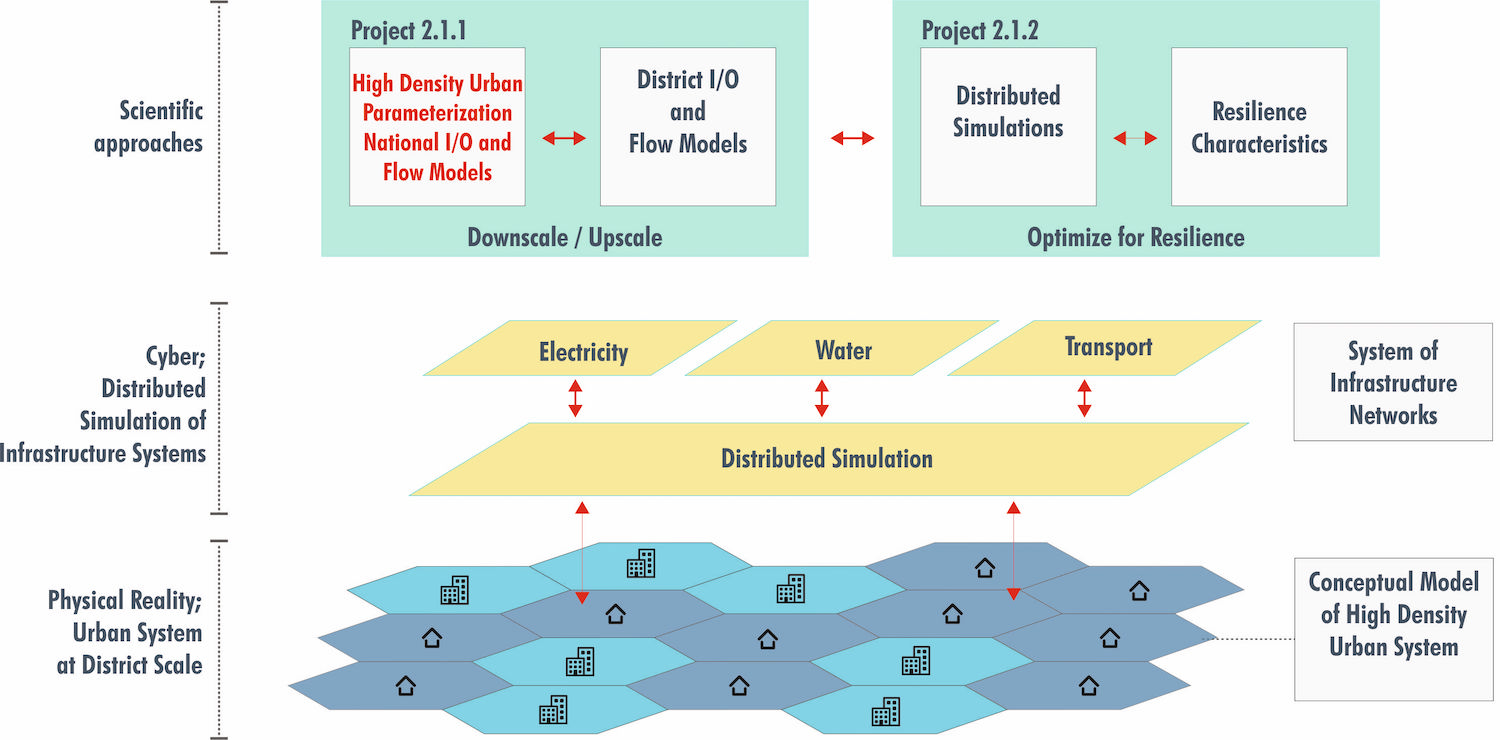Resilience Analysis of High-Density Urban Systems

Understanding interdependencies amongst critical infrastructures in a high-density urban setting to effect transformative change for increased urban resilience
An urban system is a complex system of systems, where grey (man-made) and green (natural) infrastructures and the society are collocated and integrated. The continual aggregation of infrastructure assets and integration of functions has increased the density of urban systems and the corresponding risk when exposed to disruptions.
However, devising mitigation, response and recovery plans for improving resiliency whilst accommodating existing legacy systems is extremely difficult, often exacerbated by incomplete understanding of interactions and interdependencies amongst the interdependent systems.
This module aims to understand interdependencies within high-density urban systems (HD-US) and the intensity of urban interactions in order to assess the impact of shocks on the resiliency of the HD-US fabric. This represents a key step towards building anticipatory and transformative capabilities in designing more resilient systems.
Researchers will model the complex links among various infrastructure systems of a HD-US at the regional to district scales, in order to assess the resilience of the urban fabric. By embedding full infrastructure models within a suitably downscaled regional flow or input-output (I/O) model, researchers can perform simulations of the embedded coupled infrastructures at different scales within a distributed simulation environment. Case studies will be aimed at demonstrating how resilience assessment and optimisation can support the design of the HD-US from its current state with its existing legacy systems towards a more resilient state.

Expected outcomes
The team will model the complex links among various infrastructure systems of a HD-US at the regional to district scales, enabling the resiliency of the HD-US to be assessed as a whole, in the form of a system of interconnected infrastructures (i.e. urban fabric resilience). Such a HD-US model will be capable of quantifying resilience and recovery at different time scales, from the shock response and recovery of the HD-US within a short time horizon (e.g. months) to the evolution of the HD-US within a long time horizon (years to decades).
Importantly, this model will make it possible to compare the effectiveness of interventions at the district level to improve the resilience of a city- or regional-scale HD-US. It can be used to guide the transformation of current HD-US from its current state towards a more resilient one even when constrained by legacy systems and limited resources.
They will conduct case studies to demonstrate how resilience assessment and optimisation can support the design of resilient HD-US. The team will also formulate new parameters with the appropriate spatial and temporal granularity as required to characterise HD-US, as well as capture the intensity of community activities that drive the demand for infrastructure services.
